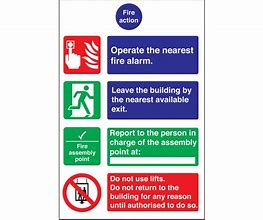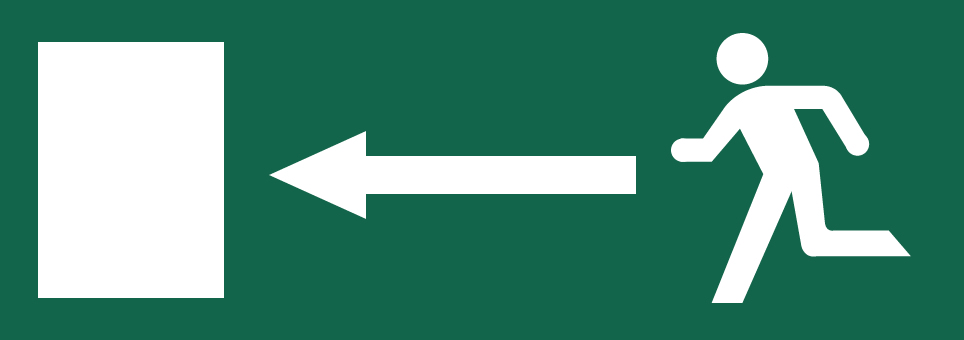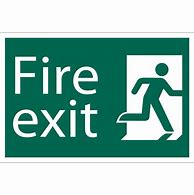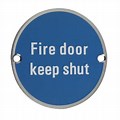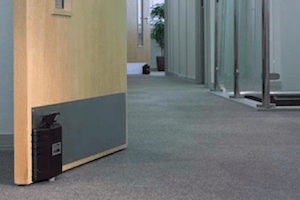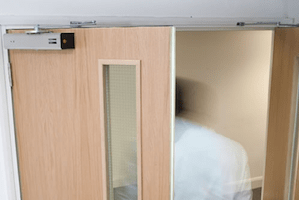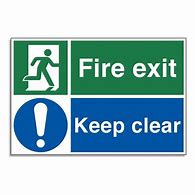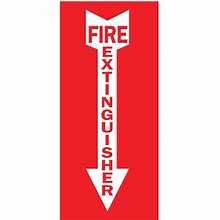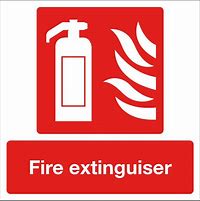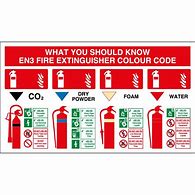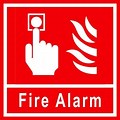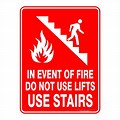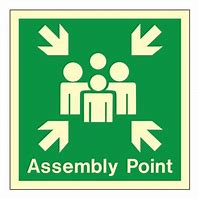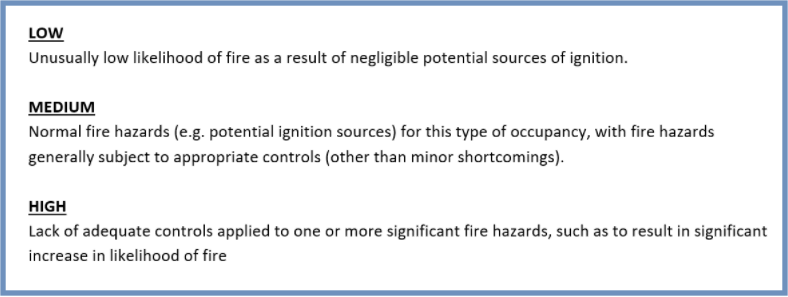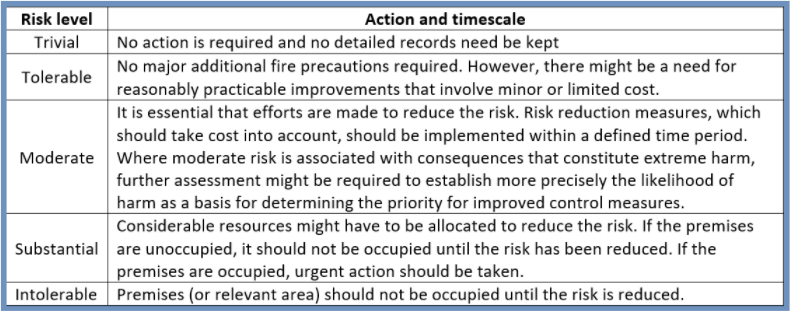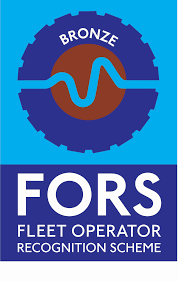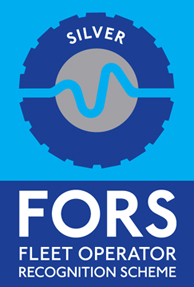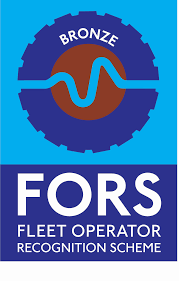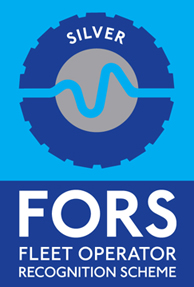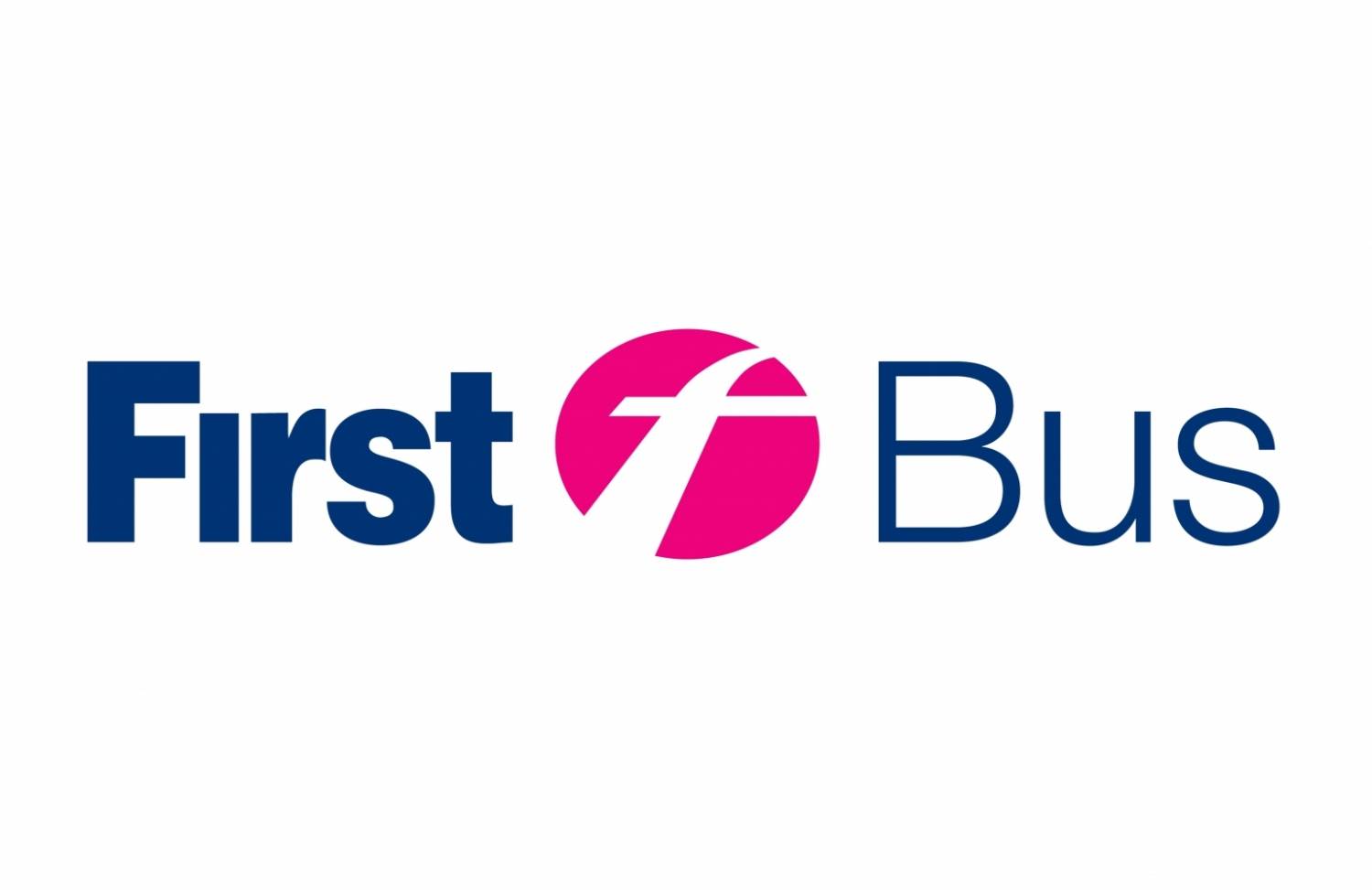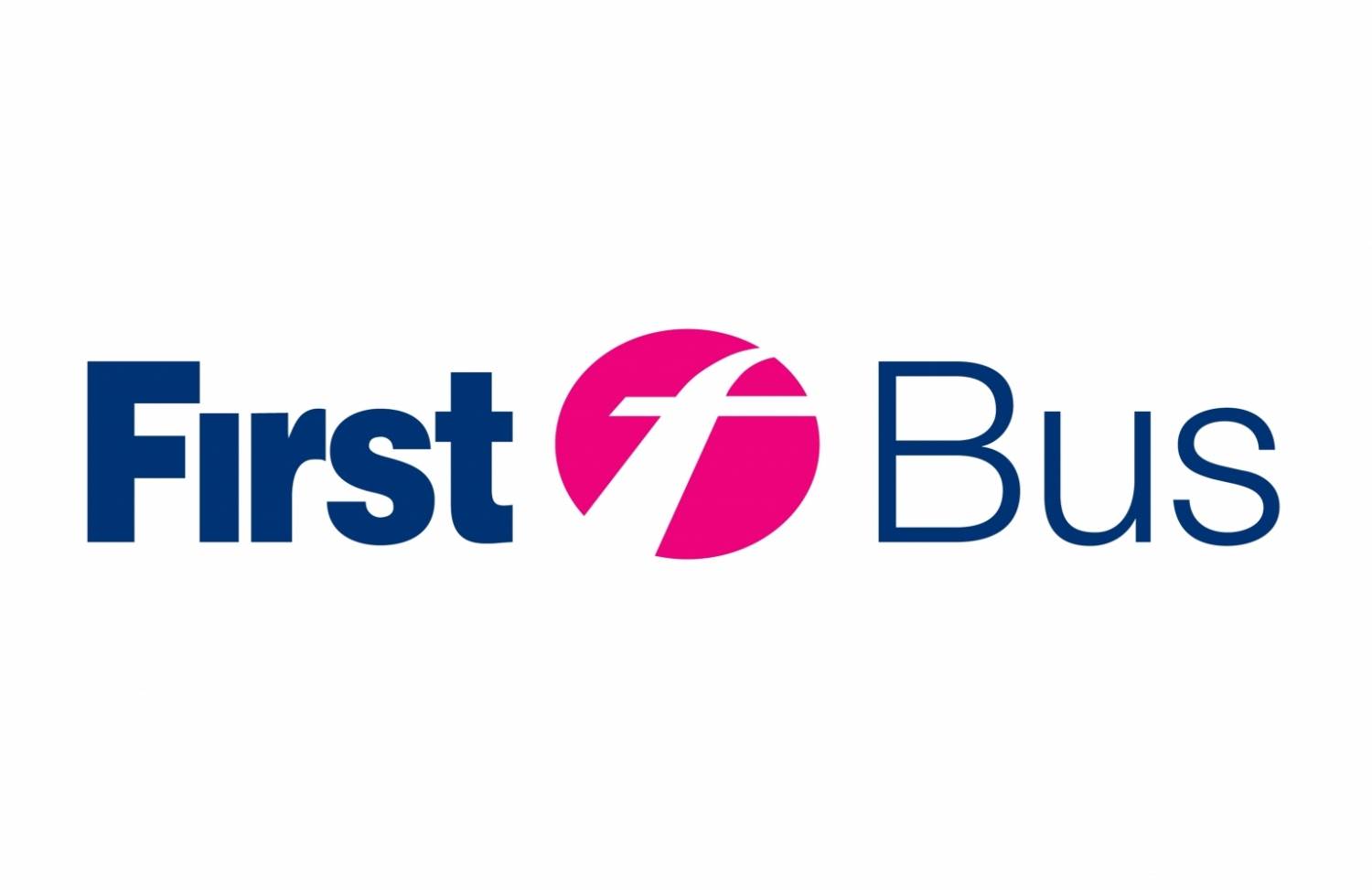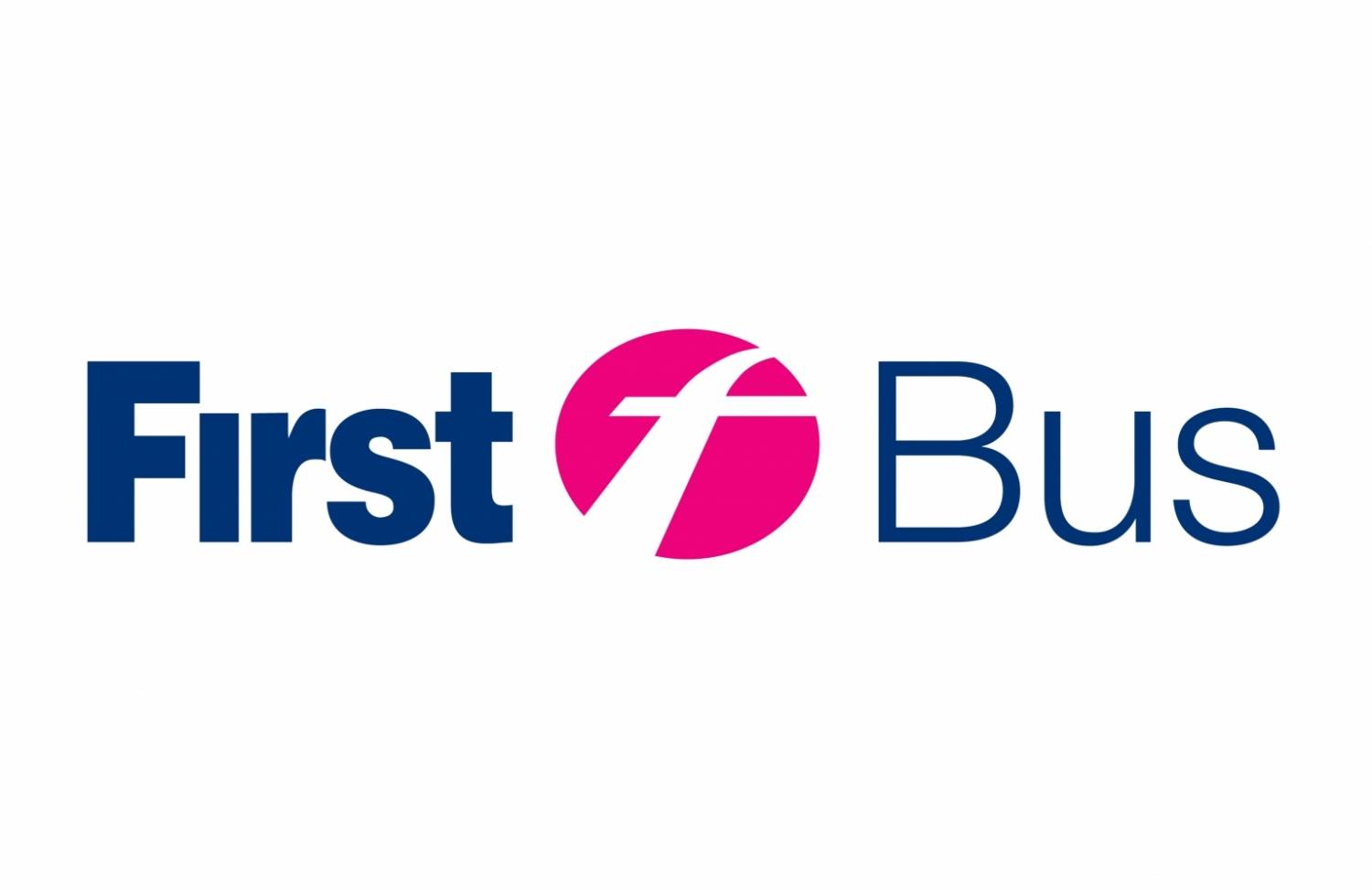Title Page
-
Site
-
Operating Company
-
Full Address
-
Persons responsible for managing fire risk for this site. Name: (EM or OM + deputy)
-
This risk assessment was prepared by
-
Date of Previous Fire Risk Assessment
-
Date of this Fire Risk Assessment
-
Suggested Date for Review (based on risk category)
-
Checked by HSE business partner (Fire Precautions Manager)
-
Checked by HSE business partner (Fire Precautions Manager)
-
Checked by HSE business partner (Fire Precautions Manager)
-
Important: A copy of this FRA must be be put into the corresponding depot folder within the employee portal, and must be updated each time the assessment is reviewed. Only the most current version of the FRA should be in the folder.
Site plan
-
This is a plan of the site which details where sources of ignition exist and combustible materials are stored. Detail storage of gas, emergency shut off valves, fuel tanks, chemicals etc.
-
Notes
-
DSEAR risk assessments are required where there are explosive atmospheres. Examples are spray paint workshops and gas vehicle sites. Seek advice from the HSE Business Partner to answer the next question. BeSafe@firstbus.co.uk
-
Does this site require a DSEAR risk assessment for explosive atmospheres?
-
If the answer to the above is yes, a DSEAR risk assessment must be carried out by expert assessors.
Guidance & Tips
-
It is a legal requirement to display the fire emergency evacuation procedures around the site and in strategic location. In a panic, people forget what to do and don't always think rationally. Sounding the alarm first is what we want them to do and aid escape for everyone.
-
Fire signage. Fire signs must be ordered through SAP and be to the British or European standards currently displayed in the majority of the site.
Ever since the introduction of the EEC Directive (EEC/92/58) in 1992, the sign industry has been in confusion and uncertainty spread amongst those who needed to specify fire signs.
There are broadly two main types of emergency exit route and final exit signs in use in the UK. One, commonly referred to as ‘Euro sign’ was based on the EEC Directive (EEC/92/58) and one was based on the British Standard BS 5499: Part 1.
The British one shows the stick person in the doorway, the European shows the stick man running towards the doorway. both mean the same thing, fire escape route. -
If the sign has an arrow it is showing the escape route to be taken. Make sure your arrows are facing the correct direction.
-
If the door is the final exit out of the building, there will be no arrow, just the stick person in the door and the word Fire Exit
-
Fire doors are there for a reason. they compartmentise the building to limit the spread of fire. They must be marked as a fire door.
-
Fire doors are installed to stop the spread of fire within buildings, however, fire doors can only fulfil this vital role, if they are closed when the fire starts. To this purpose fire doors are equipped with fire door closers, which close the door after a person passed through the door.
However, it is not always practical to have your fire doors closed at all times as this can hamper the movement of people and equipment around your premises. Corridors experiencing high footfall are especially likely to need a means of allowing fire doors to be held open to enable people to pass through or for air to circulate. It is therefore all too common to see a fire door wedged open, preventing the fire door from doing its job in the event of a fire. This is not just dangerous, it is also illegal and can lead to large fines.
These days, there are devices available that allow fire doors to be held open legally. Fire door retainers hold the doors in the open position (against the pressure from the door closer) and release the door in the case of a fire, allowing the door closer to shut the door. Free-swing fire door closers, a further alternative, allow fire doors to be used like ordinary doors but will turn into a door closer the moment the fire alarm is triggered. -
In addition to above, fire doors are recognizable by the amount of hinges usually 3 means its a fire door. they are heavier than normal doors and can hold back a fire from 30 minutes upwards dependent upon the grade purchased. Do not put letter boxes, or holes in a fire door. Always make sure fire doors have a label on them saying "Fire door keep shut" as above image. The door should also have a self closer or spring so that it closes unaided. If you see a fire dire slightly ajar, it will need attention to tighten the self closer to shut snuggly in the door frame or adjust the hingers for a better fit.
-
On the outside of a fire door, this sign must be displayed so that no-one obstructs the door. NEVER lock a fire door. Do not store waste bins or park vehicles behind the door. From the inside the door needs to push outwards and there must be a fire exit sign above the door. There must be instructions displayed on how to open the door. so for example "push bar to open"
-
In a big depot, its not always easy to see where the fire extinguishers are. so a sign like this can be positioned high up (go big) and help people see above the bus roof (imagine if all buses parked in depot) exactly where the fire extinguishers are for access.
-
Same as above
-
Fire extinguishers should be clearly labelled to show what type they are.
-
As with fire extinguishers its important that the alarm push points are clearly labelled for people to find them. So think big again, place them large and high up to direct people to the nearest point in an emergency.
-
Lifts must have this sign outside of them. Its possible in a fire for the building to lose power. Being trapped in a lift with no power can be life threatening with risks from smoke and failure.
-
Its important people know where to go for their fire assembly point and muster. Signs inside the depot should detail where it is and signs at the assembly point should be clearly displayed to help direct people to them.
Site Information
GENERAL INFORMATION
-
First Bus Policy for Fire Safety management. P13 outlines the company standards for fire safety and must be used in conjunction with this risk assessment.
-
The Premises
-
Number of Floors
-
Brief details about the site use
-
Use of the premises
-
Is there a passenger lift?
-
If yes to above, is there signage on the lift warning not to use in the event of an emergency evacuation?
-
Is there a refuge area located in this building?
-
If yes to above; detail the arrangements for use of the refuge area.
-
Are fire wardens aware of the arrangements for the use of the refuse area?
-
The Occupants
-
Approximate maximum number of people working in and around the building.
-
Any staff contractors or visitors with special access needs?
-
Number of staff using this building? (approximate)
-
Number of people using building with PEEPs
-
Number of staff under the age of 18
-
Fire Warden Provision
-
How many fire wardens does the site have?
-
Are the fire wardens trained?
-
Is there sufficient number of fire wardens to cover all shifts 7 days a week? (or when site open)
-
Are the fire wardens names and photos displayed for all to see on a poster?
-
How is a fire warden visible to other staff and visitors? (such as badge, Hi Vis label, Cap)
-
Emergency Evacuation Procedures
-
Are the emergency evacuation procedures displayed in key locations?
-
Are visitors inducted in the site emergency evacuation procedures?
-
Is the emergency assembly point clearly directed and signed?
-
Does this site have an external fire escape stairs?
-
If yes to above, are the escape stairs checked a regular intervals and records of those inspections kept?
-
Fire escape stairs need to be visually checked for obvious signs of rusting and corrosion. This can be done by internal staff, however it is recommended experts are brought in every 5 years to inspect the external staircases even when in good condition. Where corrosion is a risk this can be more frequent. Any recommendations from those inspections for repair MUST be carried out in a timely way. Where repairs have been carried out, inspections should be more frequent and based on the experts advise. (Keep a record of the approximate age of the staircase)
Hazard and Risk Identification
HAZARD AND RISK FACTORS
-
What are the factors present in the inspected area? You may choose multiple items. *You may also add photos, notes, and actions by clicking the paperclip icon.
- Smoking
- Cooking
- Electrical
- Portable Heaters
- Use of Candles
- Deliberate Ignition
- Alcohol or Drug Use
- Hoarding (Access) or poor housekeeping
- Oxygen
- Sensory Impairment
- Arson
- Hot works
- Dangerous Substances
- Other factors
- Hydrogen
- Electric Vehicles
- CNG Gas vehicles
- Diesel
- Petrol
- Electronic equipment
-
Details of the controls in place to mitigate this risk
- Fire risks
- Fire safety measures
- Action in the event of a fire
- Action on hearing the fire alarm signal
- Method of operation of manual call points
- Location and use of fire extinguishers
- Means for summoning the fire and rescue service
- Identity of persons nominated to assist with evacuation
- Fire drills
- Fire Wardens
- Fire awareness training for all staff
- Fire precaution's manager training for HSE BP
- Fire safety management training for responsible persons
- Service maintenance contract for fire fighting equipment
- Service maintenance contract for fire detection system
- Service maintenance contract for emergency lighting
- Fire Warden monthly tours to inspect site
- SOP 10 for monthly manager site inspections
- Annual Fire safety audits by HSE Business Partners for each OpCo
- Smoking policy
- Hot works policy
- Safe systems of work for each vehicle fuel type
-
Hot Works - naked flames, welding, creating sparks, heat surfaces.
-
Is hot work carried out at this site?
-
Describe the activities that take place
-
Are staff who carry out hot works trained to do so?
-
Have such staff received hot works specific safety training to understand fire watch controls and general fire safety around this work activity?
-
Refer to policy
-
Where non routine hot works take place or a contractor is carrying out the hot works, a permit to work must be completed and filed with the Engineering manager.
-
Electrical risks
-
Is the building inspected for the fixed wiring every 3 years (5 yrs if only offices)?
-
Is portable equipment subject to PAT testing at the required intervals?
-
Is all electrical equipment in use on site procured by first bus?
-
Is there a reporting and quarantine procedure for faulty electrical equipment?
-
Are personal safety checks in place to detect electrical faults on equipment?
-
Heaters
-
Are all heater provided or approved by First Bus?
-
Are arrangements in place to carry out inspections to identify where mobile heaters might be in use and if the area is safe?
-
Water ingress
-
Is all electrical supply and equipment in a safe dry location unless it is designed for outside use?
-
Lighting
-
Is mobile mains supply lighting in use?
-
Is this equipment subject to PAT testing and PSC?
-
Is lighting subject to inspection in high risk areas such as workshops and in pits?
-
Domestic appliances
-
Are domestic appliances such as radios, toasters, sandwich makers, microwaves, kettles and TV screens all listed on the company PAT testing register?
-
Flammable Substances
-
Are all flammable substances clearly labelled?
-
Are all flammable substances stored according to their labels and COSHH assessment?
-
Are flammable paints and aerosols stored in a fire proof cabinet?
-
Is the cabinet to the standard BS EN 14470-1 2004?
-
Are no more than 50 litres of flammable substances stored in the cabinets?
-
Is the flammable storage cupboard closed and secured at all times when not in use?
-
Do supervisor checks take place to ensure flammable substances are not stored in toolboxes and lockers when not in use?
-
Waste arrangements
-
Is waste stored away from fire escape routes?
-
Does all combustible waste get stored in vessels with lids?
-
Do checks take place to ensure bits are regularly emptying and are not overflowing?
-
Are waste bins stored in a secure area away from arson risk and away from fire escape routes and staircases?
-
Detail site security arrangements here and provide photographs of waste storage area.
-
Images
-
Smoking
-
Is there a designated smoking area at this site?
-
Is there evidence of non compliance with the smoking policy?
-
Risk of Arson
-
Is there evidence of antisocial behaviour affecting this site?
-
Have there been any arson attempts in the past? (last 3 years)
-
If yes to above question detail here what happened and what action has been taken to reduce this risk.
Fire Protection Measures
FIRE PROTECTION MEASURES
-
1. Means of Escape from Fire
-
It is considered that the premises are provided with reasonable means of escape in case of fire
-
The site has adequate design of escape routes, which are clear of obstructions and well sign posted?
-
The fire escape routes have emergency lighting to illuminate them?
-
Are fire escape routes clear from combustible materials such as posters and notice boards?
-
Avoid using escape route corridors to display notices and posters!!!!! This needs to be clear at all times.
-
Fire doors are suitably signed with "fire door keep shut"
-
Fire doors at not wedged open unless they have a device connected to the sounding of the alarm automatically closing them in an emergency.
-
Fire doors are have self closers and close properly without gaps?
-
The glass fitted to the fire doors is in line with building regulations for the time of fitment?
-
The site has adequate provision of fire exits, which are clearly signed as Fire Exit?
-
Exits easily and immediately openable where necessary?
-
Fire exits open in direction of escape where necessary?
-
Avoidance of sliding or revolving doors as fire exits where necessary?
-
Satisfactory means for securing exits?
-
Has alternative means of escape?
-
Escape routes and fire exit doors are unobstructed?
-
Fire exit doors are NEVER locked, chained or have a gate locked when the building is occupied?
-
Fire exit doors are not blocked by parked vehicles and the area outside of the door is hatched and clearly signed as a fire escape door?
-
It is considered that the premises are provided with reasonable arrangements for means of escape for disabled people.
-
There is a fire warden and PEEP (Personal emergency evacuation plan) produced for anyone with a disability requiring assistance in an emergency evacuation?
-
A word version of the PEEP is available on the employee portal in the risk assessments folder.
The PEEP should be completed by the individual and their line manager and the fire marshall.https://firstplc.sharepoint.com/:w:/r/sites/EmployeePortal/Businesses/FirstBus/Safety/_layouts/15/Doc.aspx?sourcedoc=%7B47A26271-96CC-47DA-91B0-0D0198FAC36C%7D&file=PEEP1%20%20Personal_Emergency_Evacuation_Plan_PEEP.doc&action=default&mobileredirect=true -
2. Emergency Escape Lighting
-
Has reasonable standard of emergency escape lighting provided?
-
Is this subject to monthly internal testing?
-
Is the lighting subject to annual service inspection with an approved contractor?
-
Fire Safety Signs and Notices
-
Are fire emergency safety signs and notices in place?
-
Are directional signs in place to aid escape routes?
-
Are fire equipment signs suitably displayed?
-
Is the fire assembly point suitably displayed to tell people where it is?
-
Is the fire assembly point at a safe location where people can further be moved away from?
-
Are no smoking signs displayed?
-
3. Means of Giving Warning in case of Fire
-
Has reasonable manually operated electrical fire alarm system provided?
-
Has automatic fire detection provided?
-
Automatic fire alarm system is subject to annual inspection by an approved contractor?
-
Fire alarm is tested weekly to ensure it works?
-
The weekly fire alarm tests, contractor inspections and fire drills are recorded on the fire log book
-
Do fire drills take place every 3-6 months?
-
Are the fire drills recorded in the fire log book?
-
Is there a debrief after the fire drill to learn lessons?
-
Are some drills planned and some unexpected by staff? (planned = training, unexpected monitors how they respond when they weren't expecting the alarm to go off)
-
Fire log book
-
Does this site have remote transmission of alarm signals to a third party or control centre?
-
if yes provide details here.
-
4. Manual Fire Extinguishing Appliances
-
Has reasonable provision of portable fire extinguishers?
-
The fire extinguishers are appropriate for the type of fire and strategically placed to prevent the wrong type being used.
-
All fire extinguishers are stored on a hook or in a stand below waist height for manual handling purposes.
-
All fire extinguishers are clearly labelled by type and purpose.
-
A contract is in place to service and maintain fire extinguishers and any fire fighting equipment such as hoses and blankets, suppression system's.
-
Hose reels provided?
-
Are all fire extinguishing appliances readily accessible?
-
Is the a contract in place for annual service and inspection of all fire fighting equipment?
-
Persons nominated and trained to use fire extinguishing appliances?
-
5. Procedures and Arrangements
-
Are procedures in the event of fire appropriate and properly documented?
-
Are there suitable arrangements for Summoning the fire and rescue service? Break glass points, who does this to raise the alarm?
-
Are there suitable site plans to share with the emergency services to identify where high risk substances might be stored for example?
-
Are there suitable arrangements for ensuring that the premises have been evacuated?
-
Persons nominated and trained to assist with evacuation, including the evacuation of disabled people?
-
6. Training and Drills
-
Are all staff/members given adequate fire safety instruction and training?
-
Overall the following courses have been delivered to key roles within the Depot. You may select multiple items.
- Fire Training Courses
- Fire Warden Training
- Nebosh Certificate in Fire Safety
- Managing safely (including Fire)
- Toolbox talk on emergency evacuation
- Fire Drills as practice
-
7. Testing and Maintenance
-
Has adequate maintenance of premises?
-
Has weekly testing and periodic servicing of fire detection and alarm system?
-
Has monthly and annual testing routines for emergency escape lighting?
-
Has annual maintenance of fire extinguishing appliances?
-
Has periodic inspection of external escape staircases and gangways?
-
Has weekly and monthly testing, six monthly inspections and annual testing of firefighting lifts?
-
Has weekly testing and periodic inspection of sprinkler installations?
-
Has routine checks of final exit doors and/or security fastenings?
-
Has annual inspection and testing of lightning protection system?
-
Carries out regular checks of external fire escape stairs to check for rust and deterioration in its integrity and build.
-
8. Records
Appropriate records of: -
Fire drills?
-
Fire training?
-
Fire alarm tests?
-
Emergency escape lighting tests?
-
Maintenance and testing of other fire protection Systems?
-
Use the fire log book standard attached.
Alternative Fuel Vehicles
-
Does this site have Alternative Fuel vehicles such as Gas or Battery powered?
-
What is the alternative fuel?
-
Please ignore this page.
-
If CNG vehicles, please confirm a DSEAR risk assessment has been conducted and site controls are detailed in this Fire Risk assessment.
-
If Hydrogen vehicles, please confirm a DSEAR risk assessment has been conducted and site controls are detailed in this Fire Risk assessment.
-
For Battery Electric Vehicles - Answer this section
-
If battery electric vehicle please detail the type of battery
-
Confirm you have a copy of the supplier safety data sheet for this battery type
-
Are these batteries stored on first bus premises
-
You must have a DSEAR risk assessment for this storage area.
-
Confirm you have a DSEAR risk assessment for this area and the control measures have been introduced.
-
How many BEVs are there at this site?
-
What make and model are they?
-
Who supplies and services the batteries for these vehicles?
-
Are there charging points at this site?
-
How many charging points at this site?
-
Are they AC or DC?
-
Charging points must be installed in accordance with manufacturers guidance and the IET Code of Practice for Electric Charging Equipment Installation.
-
Charging/parking areas should clearly be marked with signs. Where rapid DC charging units are provided they should be clearly marked to differentiate them from
conventional chargers due to the hazards associated with direct current. -
Are charging units inspected visually on a daily basis?
-
If the charging unit, cables and
connectors and/or associated infrastructure is mechanically damaged or electrically deficient, the charging unit should immediately be shut-off and be locked until
appropriately repaired. -
Are the chargers subject to a service maintenance and inspection contract?
-
Does an inspection take place every 6 months?
-
When was the last inspection?
-
Is the inspection carried out by suitably certified contractors such as those with NICEIC, ECA, SAFed, NAPIT or SELECT accreditation.
-
What is the name of the contractor. (Co)
-
Is the main breaker room shut off and locked off?
-
Is there access to the breaker room for emergency services?
-
Is the main breaker room inspected daily?
-
Are combustible materials and waste stored at least 2 metre's away from charging points?
-
Are chargers protected from impact with Armco barriers or similar?
-
Are cables stored off the floor on designated cable holders?
-
Battery Storage Facilities
-
Is this site located in a flood risk area?
-
Please detail the flood risk controls in place and attach a copy of the flood risk assessment.
-
Does this site have Battery Energy Storage Systems? BESS
-
Has a DSEAR risk assessment been carried out and controls implemented?
-
Where there is open public access to the charging stations, is there physical protection against malicious damage and vandalism?
-
Is there a clearway through to the charging area for emergency vehicles to access in an emergency?
-
Is there fire fighting equipment in close proximity to the charging area?
-
Is there fire fighting equipment in close proximity to the BEV parking area?
-
Is the charging point in doors?
-
Does the building have gas detectors ?
-
Does the indoor charging facility have roof vents to extract any gases?
-
Does the building have thermal detectors?
-
Does the building have a sprinkler system?
-
Does the site have CCTV
-
Is the CCTV viewed by supervisors on site to be alerted to any onset of thermal incident?
-
Is the site secure from general public unauthorised access?
-
Does the vehicle have a fire suppression system fitted to it?
-
Detail any other controls in place.
-
When charging is taking place, are there supervisor walk rounds to check for fire safety risks?
-
When the site is closed, are there controls in place to ensure charging does not take place?
-
Please detail these arrangements.
-
Is there suitable signage warning of High voltage risks in appropriate places around the site?
-
Is there suitable signage warning of no smoking or naked flames in charging areas?
-
Is there an emergency shut down button for power to the chargers?
Overall Assessment
-
The following simple fire risk level estimator is based on a commonly used health and safety risk level estimator.
-
-
DEFINITION OF TERMS (Risk from Fire)
-
-
Taking into account the fire prevention measures observed at the time of this risk assessment, it is considered that the risk from fire (likelihood of fire) at these premises is:
-
DEFINITION OF TERMS (Risk Assessment)
-
-
Taking into account the nature of the premises and the occupants, as well as the fire protection and procedural arrangements observed at the time of this fire risk assessment, it is considered that the consequences for life safety in the event of fire would be:
-
DEFINITION OF TERMS (Risk Level)
-
-
Accordingly, it is considered that the risk to life from fire at these premises is:
COMPLETION
-
Name of Responsible Person and Signature
-
Assessor's Name and Signature






